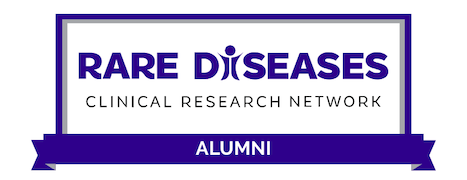Our Consortium
What is the Dystonia Coalition?
The DC is a collaboration of medical researchers and patient advocacy groups (PAG)
The Dystonia Coalition is a collaboration of medical researchers and PAGs.
The DC is a large consortium of investigators
The Dystonia Coalition is a consortium open to all investigators that aim to facilitate large-scale collaborations. Since its launch in 2009, the Dystonia Coalition has engaged 58 clinical centers in North America, Australia, Europe, and Asia. The academic centers in the Dystonia Coalition all have a special interest in dystonia research, as well as expertise in its diagnosis and treatment of all forms of dystonia. We therefore expect many patients to come to these centers for both research opportunities and expert clinical care. The Dystonia Coalition welcomes patients to come for either or both.
DC Project Management Centers
Emory University serves as the Central Coordinating Center for the Dystonia Coalition's activities. Four main research projects have been directed through four Project Centers. Two different departments at Washington University in St. Louis are directing the Natural History Project and the Biobank Project encompassing all of the isolated dystonias. University of California in San Diego is directing Objective Measures Project, and University of New Mexico is directing Patient-Centered Outcomes Project.
PAGs
Integral to our mission are our patient advocacy groups including BEAT Dystonia, the Benign Essential Blepharospasm Research Foundation (BEBRF), Dystonia International, Dystonia Europe (DE), Dystonia Ireland (DI), the Dystonia Medical Research Foundation (DMRF), the Dystonia Medical Research Foundation-Canada (DMRF-Canada), Dystonia Network of Australia, Dystonia UK, the National Spasmodic Torticollis Association (NSTA), New Zealand Dystonia Patient Network, and Tyler's Hope. Each of our patient advocacy groups is encouraged to be involved in the yearly meeting of the Dystonia Coalition, participate in the Pilot Projects Program or Career Development Program, and refer patients to our centers for participation in studies or expert treatment, and help keep patients and providers well informed.
What Has the Dystonia Coalition Achieved So Far?
- Developed a global consortium of investigators that includes 49 sites in seven countries.
- Established international consensus for the diagnosis and classification of all dystonias.
- Collected detailed clinical data from more than 3,500 subjects for natural history studies.
- Collected DNA samples from more than 3,000 well-characterized subjects.
- Developed and tested clinimetrically sound rating scales for common subtypes of dystonia.
- Published more than 197 publications.
What Are the Current Studies of the Dystonia Coalition?
Natural History Project
The aim of this project is to better characterize the heterogeneity of clinical manifestations among subjects with dystonia, how these manifestations evolve over time, and how they relate to potentially affected family members. More than 3000 cases have been recruited since 2009, many of whom continue to be followed. A fuller understanding of clinical features and especially their evolution is an essential prerequisite for testing any disease-modifying therapies that could halt or slow progression.
Patient-Centered Outcomes Project
The aim of this project is to delineate both between-subject and within-subject variations over time in response to the standard of care treatment with Botulinum toxin (BoNT) injections. Typically, injections are required about every 3 months. Therapeutic benefits emerge within the first week and then wear off after 8-16 weeks, creating a cyclical response known as the “yo-yo” effect. The development of any novel "add-on" therapeutics or replacement therapeutic is hampered by incomplete knowledge of individual temporal responses. Currently, measurement tools rely on clinical rating scales which are subjective, cumbersome for repeated frequent use, and require extensive expertise to apply. This project will develop a patient-facing tool on a hand-held electronic device, such as a smartphone.
Objective Measures Project
The aim of this project is to exploit technological advances for development of objective tools to measure the severity of dystonia. Current diagnostic and severity measures depend almost entirely on subjective clinician-rated or patient-rated scales. This project will exploit digital video software to analyze common abnormalities seen in blepharospasm, cervical dystonia, and laryngeal dystonia. This new technology could ultimately replace subjective clinical rating scales as outcome measures. Such tools could also be used for telemedicine.
Biobank Project
The aim of this project is to develop a resource that expands the existing DNA biorepository to include other biomaterials. To date, no large multicenter open-access biorepository exists for any type of dystonia. Such a biobank is essential for improving our understanding of the pathogenesis of the dystonias, so that rational therapies can be planned. It also is essential for exploration of biomarkers of disease activity that may provide useful outcome measures in clinical trials, or insights into pathogenesis.

